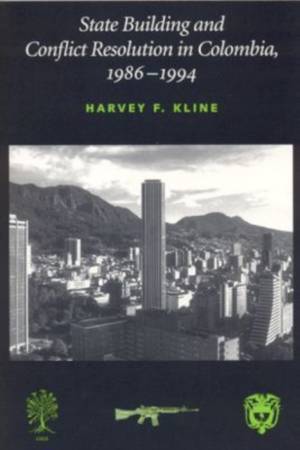
Je cadeautjes zeker op tijd in huis hebben voor de feestdagen? Kom langs in onze winkels en vind het perfecte geschenk!
- Afhalen na 1 uur in een winkel met voorraad
- Gratis thuislevering in België vanaf € 30
- Ruim aanbod met 7 miljoen producten
Je cadeautjes zeker op tijd in huis hebben voor de feestdagen? Kom langs in onze winkels en vind het perfecte geschenk!
- Afhalen na 1 uur in een winkel met voorraad
- Gratis thuislevering in België vanaf € 30
- Ruim aanbod met 7 miljoen producten
Zoeken
€ 25,95
+ 51 punten
Omschrijving
Presents a study of two Colombian presidents' attempts to resolve the conflicts in their country State Building and Conflict Resolution in Columbia, 1986-1994 presents a study of two Colombian presidents' attempts to resolve the conflicts in their country. Both President Virgilio Barco Vargas (1986-1990) and President César Gaviria Trujillo (1990-1994) felt they had to do something to end the use of violence by leftist guerrillas, drug dealers, and paramilitary groups. Those groups were using violence against the government, as well as the people, and were thereby controlling vast areas of the country. In reaction, the government itself was at times violating the human rights of Colombians. Previous chief executives had used force primarily to suppress lawbreaking groups, with only limited results. For example, Barco's immediate predecessor, Belisario Betancur Cuartas (1982-1986), had negotiated ceasefires with guerrilla groups, but all efforts failed in the end. So, both President Barco and President Gaviria sought peaceful ways out of the conflicts. In so doing they were attempting to change patterns that had been established in more than 150 years of Colombian history. All of the policies of the two presidents included some form of bargaining--either through formal negotiations, as with the guerrilla groups, or more indirectly, as with drug dealers and paramilitary groups. This study will show that the Barco and Gaviria administrations had some successes in these efforts but that they also had many failures. It will also show that human rights violations and common crime rose during the two presidencies.
Specificaties
Betrokkenen
- Auteur(s):
- Uitgeverij:
Inhoud
- Aantal bladzijden:
- 240
- Taal:
- Engels
Eigenschappen
- Productcode (EAN):
- 9780817311483
- Verschijningsdatum:
- 9/08/2001
- Uitvoering:
- Paperback
- Formaat:
- Trade paperback (VS)
- Afmetingen:
- 163 mm x 221 mm
- Gewicht:
- 390 g

Alleen bij Standaard Boekhandel
+ 51 punten op je klantenkaart van Standaard Boekhandel
Beoordelingen
We publiceren alleen reviews die voldoen aan de voorwaarden voor reviews. Bekijk onze voorwaarden voor reviews.









